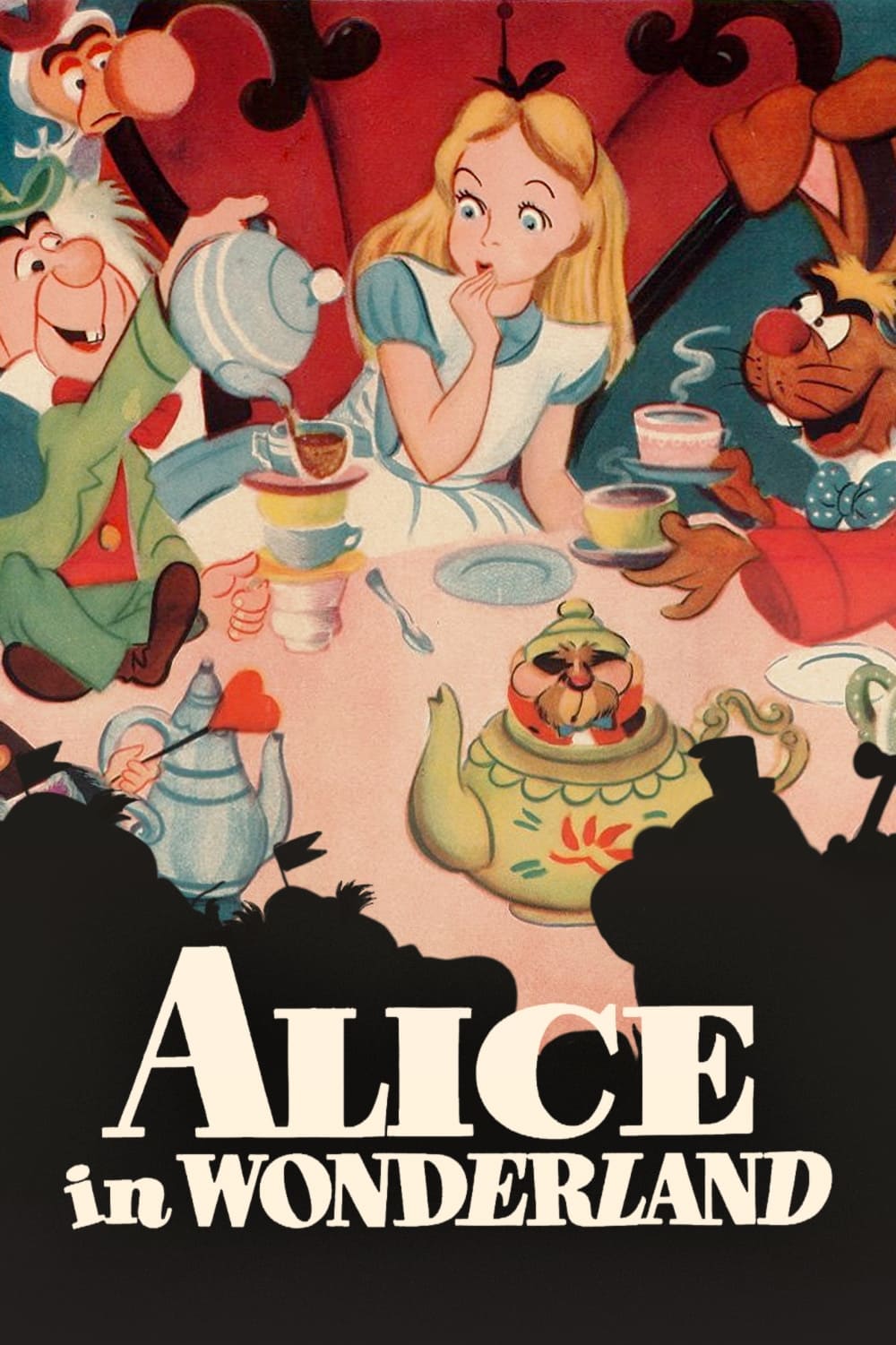
On a golden afternoon, young Alice follows a White Rabbit, who disappears down a nearby rabbit hole. Quickly following him, she tumbles into the burrow - and enters the merry, topsy-turvy world of Wonderland! Memorable songs and whimsical escapades highlight Alice's journey, which culminates in a madcap encounter with the Queen of Hearts - and her army of playing cards!
30 Nov Alice in Wonderland (1951)
Charlie’s Flowers
I spent a goodly part of my life becoming an expert in the Alice material, so have had to work to temper this comment: My initial feeling on this project is one of utter despair, as Walt and company took something that was both fun and rich, and bleached all the richness out of it. But you don’t want to read that.
What is interesting is the fact that it is still fun, and this puzzled the dickens out of me for a long time. That Dickens thing — I think I understand it now.
The notion of a story entered the Victorian era and emerged in three pieces, and that story of the story is quite a story.
Those three “pieces” founded distinct threads — traditions of storytelling — that are in a sense at war among each other for mindshare. And it is not simply for control over how we are entertained, but how we situate ourselves in life.
One thread, wholly new, was created by Charles Dodgson. It was a voyage into an internal space created by one’s own mind — itself a modern notion. There, we encounter all manner of ourselves and the puzzling artefacts of the world as we receive them. It is rich stuff, this literature, worth spending time with; highly self-aware and self-referential. In fact, a goodly part of Dodgson’s self-reference was in ruminating on the nature of self-reference. Joyce comes from this tradition, as well as our reinvention of Shakespeare.
Another thread, equally new, was created by Charlie Dickens. Previously, we had a literature of situations, often driven by an external fate. Dickens turned this on its head by creating a form based on characters. What Dickens does is create amazing characters — using a variety of tricks — that are so alive that they drive the story. Instead of the reader understanding the nature of fate, or of the situation, he/she merely needs to become familiar with the characters and follow them as they bump up against each other.
(The third thread, the one that cinema most uses, is the detective form where the writer and reader are engaged in a battle of wits to create the narrative.)
That Dickens model is less work for the reader/viewer. All the fun of the read is in discovering these personalities. This combination of fun and ease makes this thread often run into the lower scale of entertainment, all way down to wrestling and soap operas. Dickens’ method of writing was so extreme in this regard that he would write and publish chapters of large works without knowing where the characters would take him.
What Disney did with “Alice” (and other projects) was to transport the story from one of these threads (that of Dodgson) to another, that of Dickens. So instead of Alice going through a Kabbalistic Tarot-structured series of encounters with various problems in self, knowing and representation, she just goes from one colorful character to another. It works because Disney makes these characters more fun than they ever were in the books. There, they were puppets through which he could speak. Here, they are the faces of the world.
While I worry about the destruction of an intellectual landmark, I have to have admiration for the intelligence of what Walt did. The technical details of the transformation are pretty ponderous and required some extensive reworking of the episodes. For instance, check out the tea party which in the book is an amazing confabulation of reasoning about the inadequacies of reasoning. Disney turns it into a dance, even though many of the words are preserved, including the “writing-desk” riddle.
The garden of flowers is an even more extreme case. It is absolutely amazing, wonderful.
Posted in 2003
Ted’s Evaluation — 2 of 3: Has some interesting elements.


No Comments